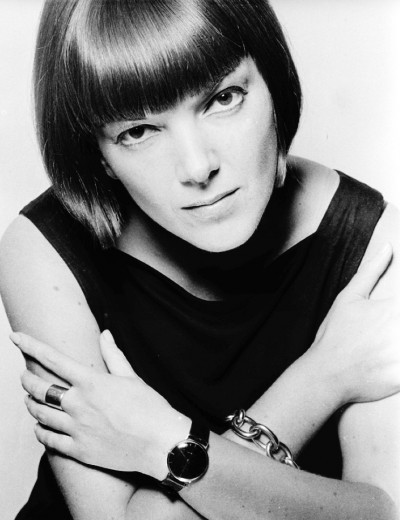
Mary Quant
About
Mary Quant was the fashion designer and entrepreneur responsible for the "London Look" of the 60's. She was the inventor of the min-skirt and hot pants. She proclaimed "good taste is death, vulgarity is life" and summarized the fashion of the 60's as "arrogant, aggressive and sexy." Although she is still designing today, she is largely known for her 60's creations.
Mary Quant was born in London, England on February 11th, 1934. From 1950-1953 she attended Goldsmith's College of Art in London. After graduating, she worked for Erik, a London milliner.
Meanwhile , Alexander Plunket-Greene and Quant had paired up with a friend named Archie McNair. When Greene, who later became her husband, inherited 5,000 pounds on his 21st birthday, the three decided to go into business together. They rented Markham House, a three-story building on King's Road in London's artist district, Chelsea. In Markham House, they opened a boutique on the first floor and a restaurant in the basement. They called the boutique Bazaar in 1955. Here she sold inexpensive, brightly coloured simple clothes which were immediate hits with young girls and boys. These included skinny rib jumpers, ready-to-wear short skirts and dresses, coloured tights, hipster belts, PVC garments and sleeveless crochet tops and hats. In 1957 she opened a second boutique.
The Look
She was a wonderful advertisement for her own designs, her short dark Vidal Sassoon hair style with it's fringe and her easy-fitting young-looking blazer jackets, brief swinging skirts and pinafore dresses. Quant designs were slightly influenced by beat dressing but interpreted in a more considered sharper, varied style. Her concept was uncompromisingly young - ten years younger than the high fashion ideal. She designed for a girlish, less developed figure. Her dresses had simple, boat necklines or childlike, round or pointed collars and narrow shoulders and sleeves. Summer and evening dresses were frequently sleeveless and body shaping was very understated, shadowing the breasts and waist to giver a long-torsoed, slightly 20's silhouette and hip-level belts and seaming. The long-waisted look made her flared and pleated skirts look even shorter. They were in fact the shortest on record, and were worn with simple strap over shoes or long boots. Mary's designs spoke for themselves, models enjoyed wearing her clothes at fashion shows. Her publicity and success made traditionally cautious designers alter their attitudes and want their own designs to appeal to the newly important, big spending 16 to 25 year old market.